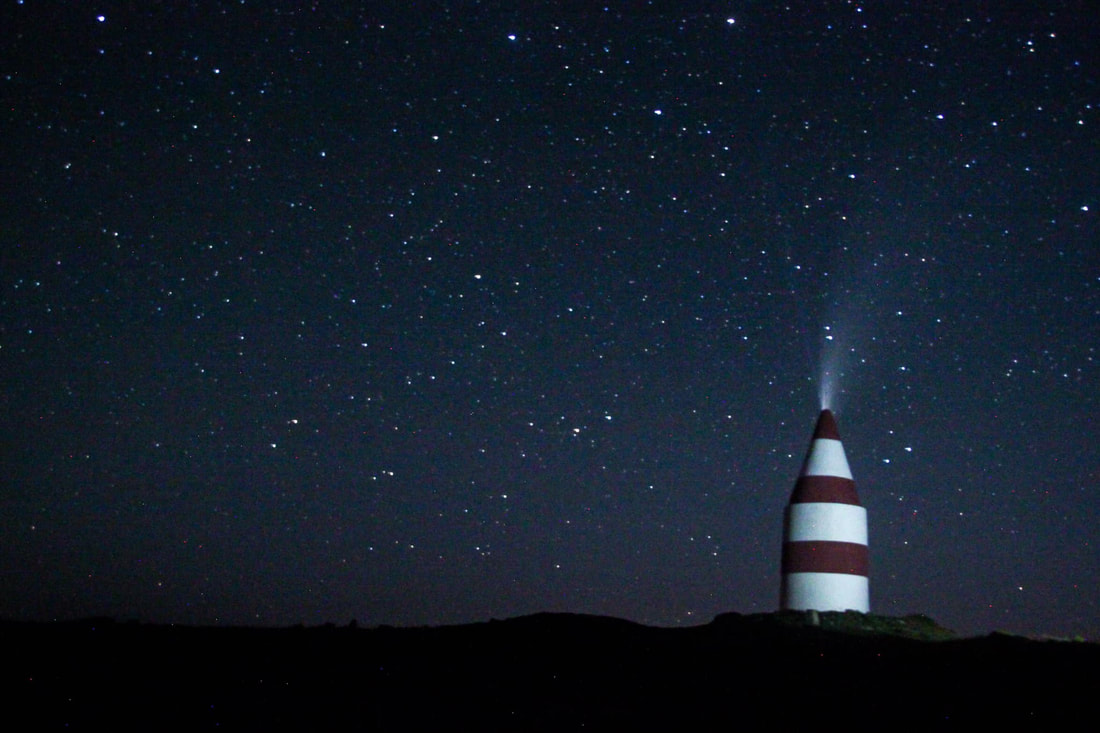 Comet Neowise turns the Daymark into a giant Roman candle. Photo: James Faulconbridge. Comet Neowise turns the Daymark into a giant Roman candle. Photo: James Faulconbridge. It’s been a quiet season for us at the observatory, feeling strange not to open our doors every week to welcome in visitors to gaze on our Scilly skies. As I’ve written previously, we made the decision as a committee of volunteers to remain closed to the public this season, as it was clear that physical distancing within the site wasn’t possible. If there’s any consolation for would-be visitors who missed out on a trip during the summer holidays, then it’s cloud! I can count on one hand the nights of good seeing we’ve had on St Martin’s during August. The peak of the annual Perseid meteor shower – a veritable light show in our dark skies – happened behind a sheet of cloud. Perhaps it’s payback for the fabulously clear skies we had in June and July. These made for some photographic beauties of Comet Neowise. (See the corker of a shot by James Faulconbridge, one of the new owners of the vineyard here on St Martin’s, turning the Daymark into a giant Roman candle!) Shifting from Summer into Autumn always fills us astronomy folk with gleeful anticipation, as the nights draw in and the astronomy ‘season’ starts in earnest. On St Martin’s we’re sticking with naked eye astronomy for now, though I’ll update you with news as to our reopening plans as and when. Ideally, this is the perfect time of year for gazing with nothing more than a pair of binoculars. If you’re after a rewarding area of sky to explore, look no further than the area between summer triangle constellations Cygnus and Vega. There are several open clusters of stars that you’ll pick up with a pair of binoculars, plus beautiful double star Albireo – with small magnification you can pick up the stunning contrast between its yellow and blue stars. Start off on Stellarium before heading out, or just lean back and scan the sky and see what you can find! Looking East, Mars is now lovely and bright as it rises after darkness falls. It’s known as the red planet but really rather more… salmon paste (at least to me! See what you think). The surface of Mars is rich in iron oxide, our rusty neighbour. Who will get there next? It’s also a super month for conjunctions – objects coming together in the night sky. The Moon and Mars get close and personal at the start of the month in the wee small hours, followed by Saturn and Jupiter floating above the waning Moon, at the slightly friendlier time of about 8pm, as September draws to a close. As we face yet more uncertainty to come, I find myself returning to the certainty of vastness inherent in astronomy. While we might be one tiny blue dot in a vast universe, there’s hope in Carl Sagan’s famous words, ‘somewhere, something incredible is waiting to be known’. Wherever you are and whatever you’re doing, we hope you can find some wonder in your night sky.
0 Comments
|
BYCharlie Payne POSTS
September 2024
|

 RSS Feed
RSS Feed